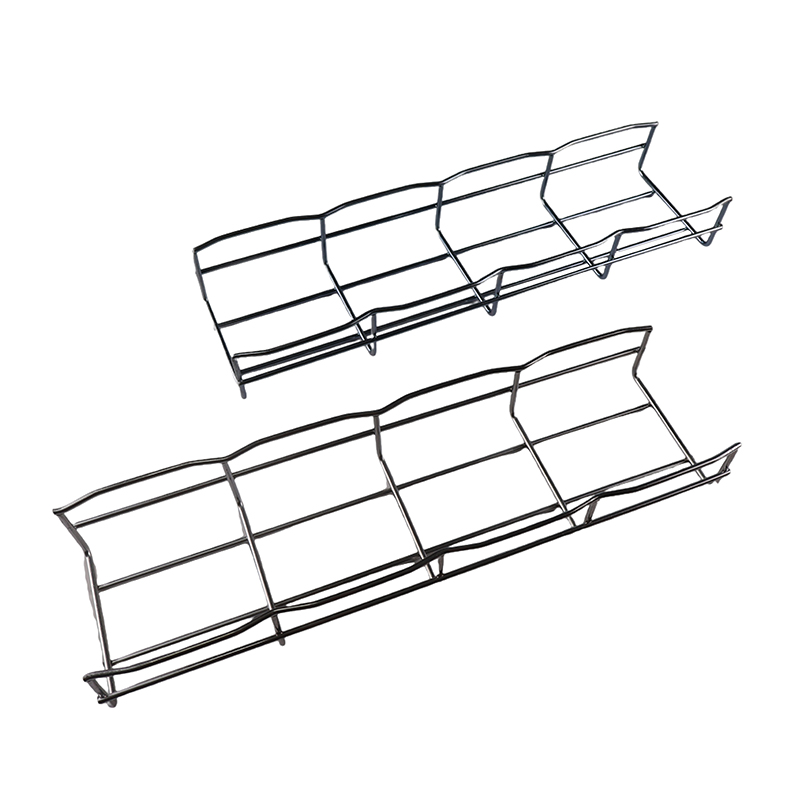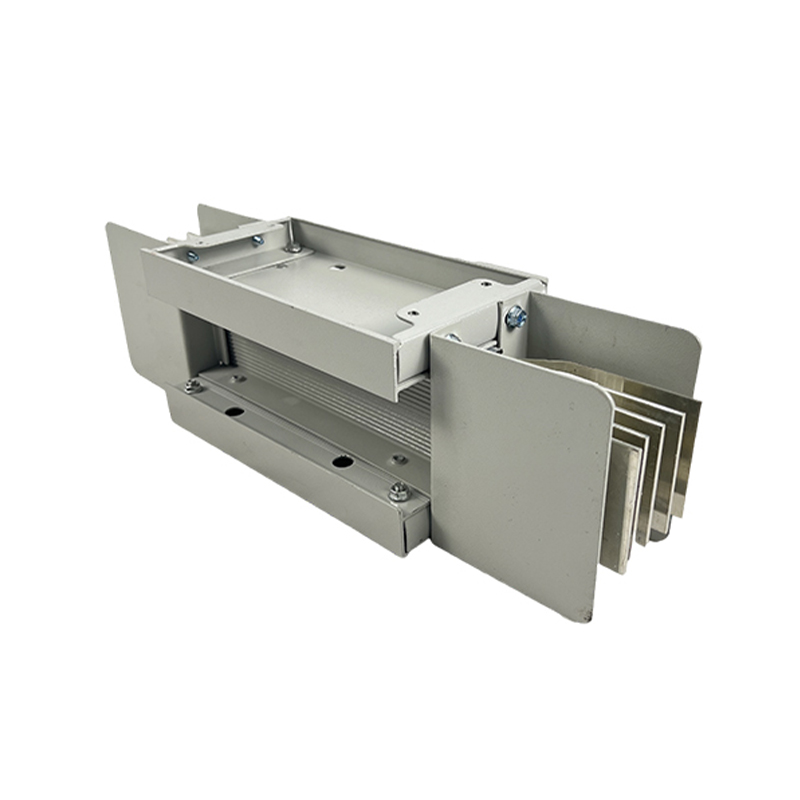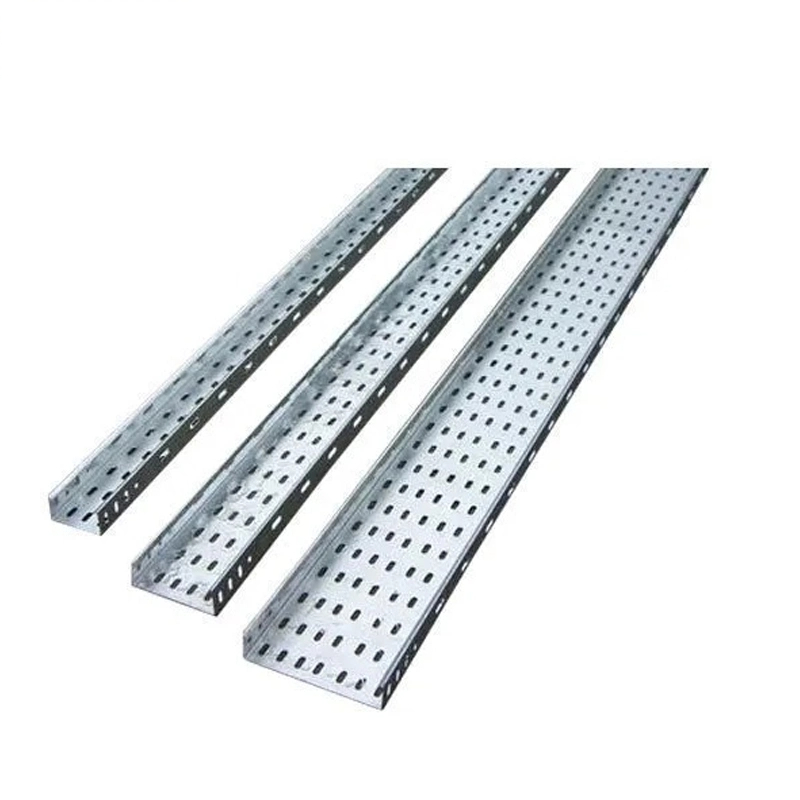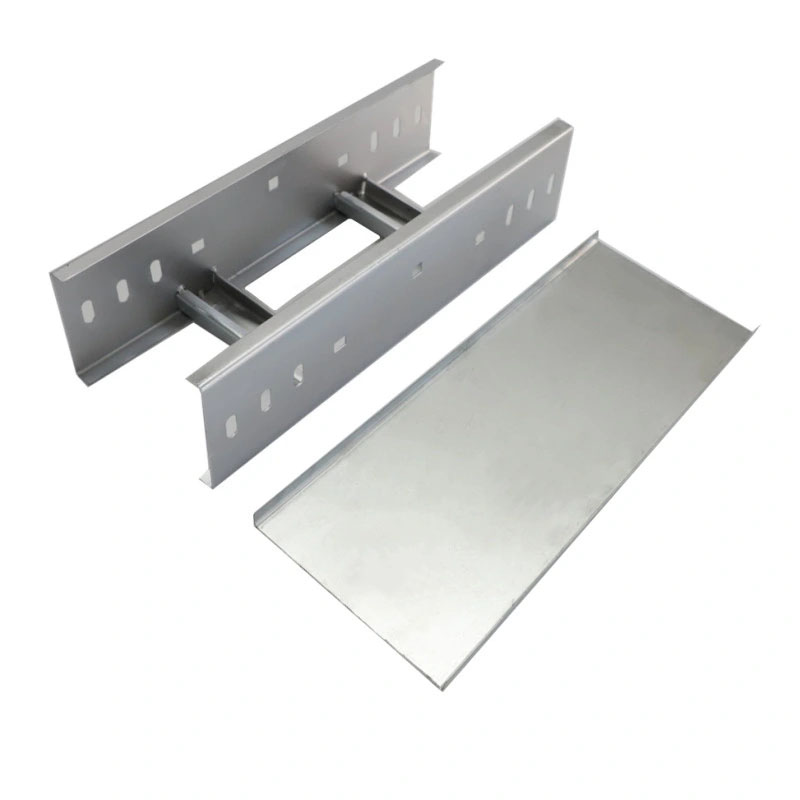How can the design flexibility of hot dip galvanized cable tray meet different wiring needs?
Release Time : 2025-04-16
Due to its excellent corrosion resistance, high load-bearing capacity and long life, hot dip galvanized cable tray is widely used in various buildings and projects. Its design flexibility is the key to meeting different wiring needs.
1. Diversified structural forms
Hot dip galvanized cable tray has a variety of structural forms, including trough type, tray type and ladder type. These different structural forms provide diverse options for wiring.
Trough type bridge: fully enclosed structure, suitable for laying computer cables, communication cables, thermocouple cables and other control cables of highly sensitive systems, which can effectively shield external interference.
Tray type bridge: There are holes and grooves at the bottom, which has good heat dissipation and is suitable for laying power cables with large cross-sections but small quantities.
Ladder type bridge: light weight, low cost, unique shape, easy installation, good heat dissipation and air permeability, suitable for laying cables with generally larger diameters, especially for laying high and low voltage power cables.
2. Flexible assembly and adjustment
The design of hot dip galvanized cable tray takes into account the convenience and flexibility of installation. Its modular design allows the bridge to be combined and adjusted according to different wiring requirements.
Modular design: The bridge is composed of multiple standard components, such as straight segments, elbows, tees, etc. These components can be flexibly assembled according to the wiring path to form various complex wiring systems.
Adjustability: The support points and fixtures of the bridge can be adjusted according to the actual wiring requirements to ensure the stable laying and easy maintenance of the cables.
3. Adapt to different installation environments
Hot dip galvanized cable tray can adapt to different installation environments, including indoor, outdoor, humid, high temperature, low temperature and other harsh environments.
Indoor installation: In indoor environments, the bridge can be erected along the walls, columns, beams and floor slabs of the building, and coordinated with air conditioning pipelines and electrical pipelines to ensure the beauty and functionality of the wiring.
Outdoor installation: In outdoor environments, the hot-dip galvanized layer can effectively prevent the corrosion of corrosive media such as acids, alkalis, salts, etc. on the bridge, extending the service life of the bridge. At the same time, the design of the bridge also takes into account wind resistance, earthquake resistance and other performance to ensure stability under adverse weather conditions.
4. Meet future expansion needs
The design of the hot dip galvanized cable tray also takes into account future expansion needs. By reserving sufficient space and interfaces, the bridge can easily adapt to the increase in the number of cables or the adjustment of the wiring path in the future.
Reserved space: During the bridge design process, a certain amount of space can be reserved for the addition or replacement of future cables.
Expandable interface: The ends and branch points of the bridge can be designed with expandable interfaces so that new bridges or equipment can be easily connected when needed in the future.
The hot dip galvanized cable tray fully demonstrates its design flexibility through its diverse structural forms, flexible assembly and adjustment capabilities, ability to adapt to different installation environments, and design features that meet future expansion needs.
1. Diversified structural forms
Hot dip galvanized cable tray has a variety of structural forms, including trough type, tray type and ladder type. These different structural forms provide diverse options for wiring.
Trough type bridge: fully enclosed structure, suitable for laying computer cables, communication cables, thermocouple cables and other control cables of highly sensitive systems, which can effectively shield external interference.
Tray type bridge: There are holes and grooves at the bottom, which has good heat dissipation and is suitable for laying power cables with large cross-sections but small quantities.
Ladder type bridge: light weight, low cost, unique shape, easy installation, good heat dissipation and air permeability, suitable for laying cables with generally larger diameters, especially for laying high and low voltage power cables.
2. Flexible assembly and adjustment
The design of hot dip galvanized cable tray takes into account the convenience and flexibility of installation. Its modular design allows the bridge to be combined and adjusted according to different wiring requirements.
Modular design: The bridge is composed of multiple standard components, such as straight segments, elbows, tees, etc. These components can be flexibly assembled according to the wiring path to form various complex wiring systems.
Adjustability: The support points and fixtures of the bridge can be adjusted according to the actual wiring requirements to ensure the stable laying and easy maintenance of the cables.
3. Adapt to different installation environments
Hot dip galvanized cable tray can adapt to different installation environments, including indoor, outdoor, humid, high temperature, low temperature and other harsh environments.
Indoor installation: In indoor environments, the bridge can be erected along the walls, columns, beams and floor slabs of the building, and coordinated with air conditioning pipelines and electrical pipelines to ensure the beauty and functionality of the wiring.
Outdoor installation: In outdoor environments, the hot-dip galvanized layer can effectively prevent the corrosion of corrosive media such as acids, alkalis, salts, etc. on the bridge, extending the service life of the bridge. At the same time, the design of the bridge also takes into account wind resistance, earthquake resistance and other performance to ensure stability under adverse weather conditions.
4. Meet future expansion needs
The design of the hot dip galvanized cable tray also takes into account future expansion needs. By reserving sufficient space and interfaces, the bridge can easily adapt to the increase in the number of cables or the adjustment of the wiring path in the future.
Reserved space: During the bridge design process, a certain amount of space can be reserved for the addition or replacement of future cables.
Expandable interface: The ends and branch points of the bridge can be designed with expandable interfaces so that new bridges or equipment can be easily connected when needed in the future.
The hot dip galvanized cable tray fully demonstrates its design flexibility through its diverse structural forms, flexible assembly and adjustment capabilities, ability to adapt to different installation environments, and design features that meet future expansion needs.







